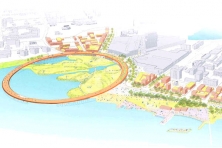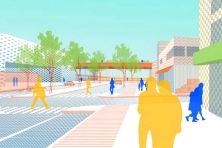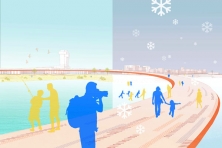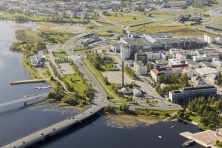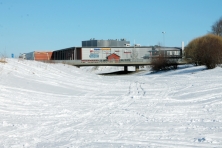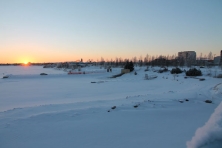The Engagement
TornioHaparanda (FI) - Runner up
TEAM DATA
Team Representative: Jean-Michel Humbert (FR) – architect
Contributors: Sasha Petersen (US), Kelsey Kish (US) – architects; Rebekah Armstrong (US), Kristine Pedersen (US) – landscape architects
Washington (USA)
+1 202 367 6667 – contact@planh.fr
See the complete listing of portraits here
See the site page here

J-M. Humbert
INTERVIEW
Click on the images to enlarge
1. How did you form the team for the competition?
After working at Studio MB for a year on various projects, it was clear that we had a similar architectural vision. When I showed them the contest’s sites, they showed equal enthusiasm, so it was natural for us to work together.
2. How do you define the main issue of your project, and how did you answer on this session main topic: the place of productive activities within the city?
The main issue was to find the balance in the town’s scale, the site’s size and the municipalities’ ambitions. It was clear that there was the desire for this space to be attractive, so we expressed this in the ring, a symbol of union and sharing, which also allowed for the creation of the productive activities. We designed this space for activities at the urban scale, being both eco-friendly and local production oriented. Both of these new spaces were designed with the same values and goals.
3. How did this issue and the questions raised by the site mutation meet?
The ring allowed us to control our proposal’s scale, but it would have been an empty shell without the support of the new urban productive activities. The dramatic and attractive new public space’s shape creates a new opportunity for its visitors to have access to local, artisanal and eco-friendly products. While at the same time, the area linked to productive activities is connected to the ring, easy to identify and diverse public space. Both new spaces serve the other.
4. Have you treated this issue previously? What were the reference projects that inspired yours?
It’s common to search for architectural balance. However, the uniqueness came from the space that these two modest seaside border towns shared and their desire to give a face-lift to this space, which is why we provided an iconic answer. We were inspired by the Christo pedestrian bridge at Iseo. We also wanted to play with the emptiness as SANAA at Teshima. Our urban vision was also influenced by Rem Koolhaas book “New York Delires”
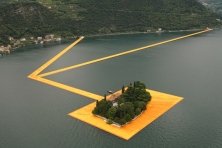
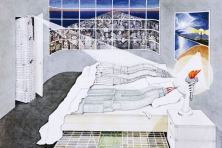
5. Urban-architectural projects like the ones in Europan can only be implemented together with the actors through a negotiated process and in time. How did you consider this issue in your project?
Urban-architectural projects like the ones in Europan can only be implemented together with the actors through a negotiated process and in time. How did you consider this issue in your project? For our proposal, we studied the existing conditions and tried to understand its intentions. We wanted our designed to be consistent with the existing city fabrics.
6. Is it the first time you have been awarded a prize at Europan? How could this help you in your professional career?
Yes, it is the first time. We hope this award will allow us to meet and get in touch with new actors who share our vision and look to create it as a building or as a master plan. This award will also help us to promote the European way to design on the other side of the Atlantic Ocean.
